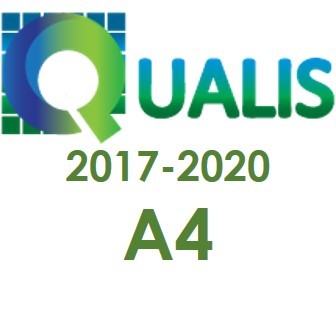Genômica estrutural, funcional e comparativa da tilápia do Nilo (Oreochromis niloticus)
Palavras-chave:
Genômica, GH, Oreochromis niloticus, Tilápia do NiloResumo
A tilápia do Nilo destaca-se na aquacultura devido à sua adaptabilidade a ambientes de água doce e salobra. O avanço significativo na área da genômica culminou na sequenciação e anotação do genoma de Oreochromis niloticus, submetido pela Universidade de Maryland no ano de 2019. O presente estudo tem como objetivo apresentar aspectos estruturais, funcionais e comparativos do genoma desta espécie, através da utilização de bancos de dados genômicos, tendo como foco o gene do hormônio do crescimento (GH). Estudos associativos genômicos permitiram a identificação de outros cinco genes relacionados ao crescimento. A análise filogenética revelou a evolução deste gene em diversas espécies, enquanto a genômica funcional e comparativa apontam para a necessidade de maior caracterização das relações entre genes.
Downloads
Referências
AMOUSSOU, T. Olivier et al. An insight into advances in fisheries biology, genetics and genomics of African tilapia species of interest in aquaculture. Aquaculture Reports, v. 14, p. 100188, jul. 2019. Disponível em: https://doi.org/10.1016/j.aqrep.2019.100188. Acesso em: 28 out. 2023.
BATEMAN, Alex et al. UniProt: the universal protein knowledgebase in 2023. Nucleic Acids Research, 21 nov. 2022. Disponível em: https://doi.org/10.1093/nar/gkac1052. Acesso em: 23 jan. 2024.
BER, Raphael; DANIEL, Violet. Sequence analysis suggests a recent duplication of the growth hormoneencoding gene in Tilapia nilotica. Gene, v. 125, n. 2, p. 143-150, mar. 1993. Disponível em: https://doi.org/10.1016/0378-1119(93)90321-s. Acesso em: 12 fev. 2024.
BER, Raphael; DANIEL, Violet. Structure and sequence of the growth hormone-encoding gene from Tilapia nilotica. Gene, v. 113, n. 2, p. 245-250, abr. 1992. Disponível em: https://doi.org/10.1016/0378-1119(92)90402-b. Acesso em: 13 nov. 2023.
BULL, J. J. Sex determining mechanisms: an evolutionary perspective. Experientia, v. 41, n. 10, p. 1285-1296, out. 1985. Disponível em: https://doi.org/10.1007/bf01952071. Acesso em: 23 jan. 2024.
CAMPBELL, C. Ryan; POELSTRA, J. W.; YODER, Anne D. What is Speciation Genomics? The roles of ecology, gene flow, and genomic architecture in the formation of species. Biological Journal of the Linnean Society, v. 124, n. 4, p. 561-583, 11 jun. 2018. Disponível em: https://doi.org/10.1093/biolinnean/bly063. Acesso em: 23 jan. 2024.
CHAUVE, Cedric; DOYON, Jean-Philippe; EL-MABROUK, Nadia. Gene family evolution by duplication, speciation, and loss. Journal of Computational Biology, v. 15, n. 8, p. 1043-1062, out. 2008. Disponível em: https://doi.org/10.1089/cmb.2008.0054. Acesso em: 12 fev. 2024.
COSSINS, Andrew R.; CRAWFORD, Douglas L. Fish as models for environmental genomics. Nature Reviews Genetics, v. 6, n. 4, p. 324-333, abr. 2005. Disponível em: https://doi.org/10.1038/nrg1590. Acesso em: 28 out. 2023.
DEVLIN, Robert H. et al. Extraordinary salmon growth. Nature, v. 371, n. 6494, p. 209-210, set. 1994. Disponível em: https://doi.org/10.1038/371209a0. Acesso em: 1 nov. 2023.
ESHEL, O. et al. Linkage and physical mapping of sex region on LG23 of nile tilapia (oreochromis niloticus). G3 Genes|Genomes|Genetics, v. 2, n. 1, p. 35-42, jan. 2012. Disponível em: https://doi.org/10.1534/g3.111.001545. Acesso em: 23 jan. 2024.
FAO fisheries & aquaculture. Disponível em: https://www.fao.org/fishery/statistics-query/en/global_production. Acesso em: 9 fev. 2024.
FAO. The state of world fisheries and aquaculture 2022: Towards Blue Transformation. Roma: FAO, 2022. E-book. ISBN 9789251363645. Disponível em: https://doi.org/10.4060/cc0461en. Acesso em: 24 jan. 2024.
FJALESTAD, Kjersti Turid; MOEN, Thomas; GOMEZ-RAYA, Luis. Prospects for genetic technology in salmon breeding programmes. Aquaculture Research, v. 34, n. 5, p. 397-406, 28 mar. 2003. Disponível em: https://doi.org/10.1046/j.1365-2109.2003.00823.x. Acesso em: 1 nov. 2023.
GUYON, Richard et al. A high-resolution map of the Nile tilapia genome: a resource for studying cichlids and other percomorphs. BMC Genomics, v. 13, n. 1, p. 222, 2012. Disponível em: https://doi.org/10.1186/1471-2164-13-222. Acesso em: 28 out. 2023.
HALE, Laura A. et al. Characterization of the retinoic acid receptor genes raraa, rarab and rarg during zebrafish development. Gene Expression Patterns, v. 6, n. 5, p. 546-555, jun. 2006. Disponível em: https://doi.org/10.1016/j.modgep.2005.10.007. Acesso em: 6 nov. 2023.
HARRISON, Colin; WABBERSEN, Tara; SHEPHERD, Iain T. In vivo visualization of the development of the enteric nervous system using aTg(−8.3bphox2b:kaede)transgenic zebrafish. genesis, v. 52, n. 12, p. 985-990, 4 nov. 2014. Disponível em: https://doi.org/10.1002/dvg.22826. Acesso em: 6 nov. 2023.
KAMENSKAYA, D. N.; BRYKOV, V. A. Fish growth hormone genes: structure and divergence. Russian Journal of Marine Biology, v. 46, n. 4, p. 233-242, jul. 2020. Disponível em: https://doi.org/10.1134/s1063074020040033. Acesso em: 12 fev. 2024.
KAWAUCHI, Hiroshi et al. Identification of growth hormone in the sea lamprey, an extant representative of a group of the most ancient vertebrates. Endocrinology, v. 143, n. 12, p. 4916-4921, 1 dez. 2002. Disponível em: https://doi.org/10.1210/en.2002-220810. Acesso em: 12 fev. 2024.
KOCHER, Thomas D. Adaptive evolution and explosive speciation: the cichlid fish model. Nature Reviews Genetics, v. 5, n. 4, p. 288-298, abr. 2004. Disponível em: https://doi.org/10.1038/nrg1316. Acesso em: 28 out. 2023.
KOONIN, Eugene V. Orthologs, paralogs, and evolutionary genomics. Annual Review of Genetics, v. 39, n. 1, p. 309-338, dez. 2005. Disponível em: https://doi.org/10.1146/annurev.genet.39.073003.114725. Acesso em: 20 jan. 2024.
KWONG, Jennifer Q. et al. The mitochondrial calcium uniporter underlies metabolic fuel preference in skeletal muscle. JCI Insight, v. 3, n. 22, 15 nov. 2018. Disponível em: https://doi.org/10.1172/jci.insight.121689. Acesso em: 20 jan. 2024.
MACLEAN, N. et al. Transgenic tilapia and the tilapia genome. Gene, v. 295, n. 2, p. 265-277, ago. 2002. Disponível em: https://doi.org/10.1016/s0378-1119(02)00735-7. Acesso em: 1 nov. 2023.
MARTIN, Fergal J. et al. Ensembl 2023. Nucleic Acids Research, v. 51, n. D1, p. 933-941, 6 jan. 2023. Disponível em: https://doi.org/10.1093/nar/gkac958. Acesso em: 19 jan. 2024.
MUTCH, David M.; WAHLI, Walter; WILLIAMSON, Gary. Nutrigenomics and nutrigenetics: the emerging faces of nutrition. The FASEB Journal, v. 19, n. 12, p. 1602-1616, out. 2005. Disponível em: https://doi.org/10.1096/fj.05-3911rev. Acesso em: 30 out. 2023.
NICO, L.; SCHOFIELD, P.; NEILSON, M. Oreochromis niloticus (linnaeus, 1758). 18 dez. 2013. Disponível em: https://nas.er.usgs.gov/queries/factsheet.aspx?SpeciesID=468. Acesso em: 27 out. 2023.
PONZONI, Raul W. et al. Genetic improvement of Nile tilapia (Oreochromis niloticus) with special reference to the work conducted by the WorldFish Center with the GIFT strain. Reviews in Aquaculture, v. 3, n. 1, p. 27-41, 23 fev. 2011. Disponível em: https://doi.org/10.1111/j.1753-5131.2010.01041.x. Acesso em: 4 nov. 2023.
SÁNCHEZ-RAMOS, I. et al. Identificación de RFLP en genes relacionados con el crecimiento en dorada sparus aurata L., 1758. Boletín. Instituto Español de Oceanografía., v. 21, n. 1-4, p. 253-259, 1 dez. 2005. Disponível em: http://hdl.handle.net/10261/313270. Acesso em: 2 nov. 2023.
SAYERS, Eric W. et al. Database resources of the national center for biotechnology information. Nucleic Acids Research, v. 50, n. D1, p. 20-26, 1 dez. 2021. Disponível em: https://doi.org/10.1093/nar/gkab1112. Acesso em: 19 jan. 2024.
SOFY, H.; LAYLA, A.; IMAN, M.K.A. Karyotypic diversity of some tilapia species. Nature and Science, v. 6, n. 1, p. 19-27, 2008. Disponível em: https://www.sciencepub.net/nature/0601/03_0346_Sofy_Karyotypic.pdf. Acesso em: 29 out. 2023.
SPRAGUE, J. The Zebrafish Information Network: the zebrafish model organism database. Nucleic Acids Research, v. 34, n. 90001, 1 jan. 2006. Disponível em: https://doi.org/10.1093/nar/gkj086. Acesso em: 20 jan. 2024.
SUPIWONG, Weerayuth et al. Chromosomal characteristic of nile tilapia (oreochromis niloticus) from mitotic and meiotic cell division by t-lymphocyte cell culture. Cytologia, v. 78, n. 1, p. 9-14, 2013. Disponível em: https://doi.org/10.1508/cytologia.78.9. Acesso em: 29 out. 2023.
WANG, Xueju et al. Retinoic acid receptor alpha drives cell cycle progression and is associated with increased sensitivity to retinoids in T-cell lymphoma. Oncotarget, v. 8, n. 16, p. 26245-26255, 17 fev. 2017. Disponível em: https://doi.org/10.18632/oncotarget.15441. Acesso em: 12 fev. 2024.
WOOD, Andrew R. et al. Defining the role of common variation in the genomic and biological architecture of adult human height. Nature Genetics, v. 46, n. 11, p. 1173-1186, 5 out. 2014. Disponível em: https://doi.org/10.1038/ng.3097. Acesso em: 4 nov. 2023.
YU, Xiaofei et al. Genome-wide association analysis of adaptation to oxygen stress in Nile tilapia (Oreochromis niloticus). BMC Genomics, v. 22, n. 1, 9 jun. 2021. Disponível em: https://doi.org/10.1186/s12864-021-07486-5. Acesso em: 4 nov. 2023.
ZIMMERMANN, Rosalyn C.; WELCH, Danny R. BRMS1: a multifunctional signaling molecule in metastasis. Cancer and Metastasis Reviews, v. 39, n. 3, p. 755-768, 30 mar. 2020. Disponível em: https://doi.org/10.1007/s10555-020-09871-0. Acesso em: 20 jan. 2024.
Arquivos adicionais
Publicado
Como Citar
Edição
Seção
Licença
Copyright (c) 2024 Revista Brasileira de Iniciação Científica

Este trabalho está licenciado sob uma licença Creative Commons Attribution-NonCommercial-ShareAlike 4.0 International License.




